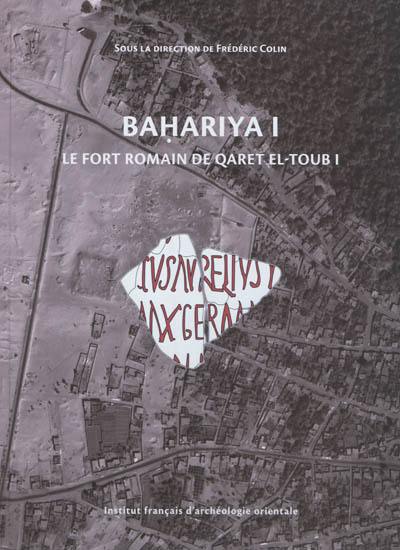
Fiche technique
Format : Relié
Nb de pages : VII-256 pages
Poids : 1506 g
Dimensions : 25cm X 33cm
ISBN : 978-2-7247-0566-9
EAN : 9782724705669
Bahariya I : le fort romain de Qaret el-Toub I. Vol. 1
Quatrième de couverture
Qaret el-Toub est un des rares sites du nord de l'oasis de Bahariya à avoir échappé aux prospections archéologiques menées par Ahmed Fakhry dans les années 1930-1940. Le substrat rocheux y accueille un cimetière utilisé de la fin de l'Ancien Empire au Haut-Empire romain, qui fait partie de la vaste couronne de nécropoles entourant l'agglomération de Psôbthis, chef-lieu antique de la «Petite Oasis». Dans le dernier quart du IIIe siècle, des castra furent installés par-dessus les tombes, à l'aboutissement des pistes caravanières en provenance du sud (Darb el-'Arbayin) et du nord-ouest (oasis de Siwa). Ce premier volume de la publication des fouilles de Qaret el-Toub s'attache à identifier la nature du site, à diagnostiquer le potentiel scientifique de son gisement archéologique et à établir le cadre chronologique dans lequel fut construite, entretenue et remployée la fortification d'oasis chargée de manifester localement et de protéger les institutions publiques de l'État romain. Comme le fort fut occupé sans discontinuer depuis sa fondation, sous Dioclétien et Maximien, jusqu'au Xe siècle de notre ère, la séquence des habitats qu'il abrite constitue un observatoire privilégié pour l'étude de la période de transition entre l'Antiquité tardive et l'époque arabe.
Qaret el-Toub is one of the few sites in the northern Bahariya oasis that escaped the archaeological surveys conducted by Ahmed Fakhry in the 1930s and 1940s. A graveyard settled on the bedrock was used from the end of the Old Kingdom until the early Roman Period. It belongs to the large ring of cemeteries surrounding the urban area of Psôbthis, ancient chief town of the "Small Oasis". In the last quarter of the 3rd century AD, military castra were installed over the graves in the incoming area of the caravan routes from the south (Darb el-'Arbayin) and from the northwest (Siwa Oasis). This first volume of the final archaeological reports of the excavations at Qaret el-Toub attempts to identify the nature of the site, to make an assessment of the scientific potential of its archaeological field, and to determine the overall chronology of the history of this oasis fortress, that was built in order to embody locally and to protect the public institutions of the Roman State. As the fort was occupied continuously, from its building under Diocletian and Maximian until the 10th century AD, the sequence of occupation levels which it provides makes it an ideal research field for the study of the transitional period leading from late Antiquity to Arabic times.





